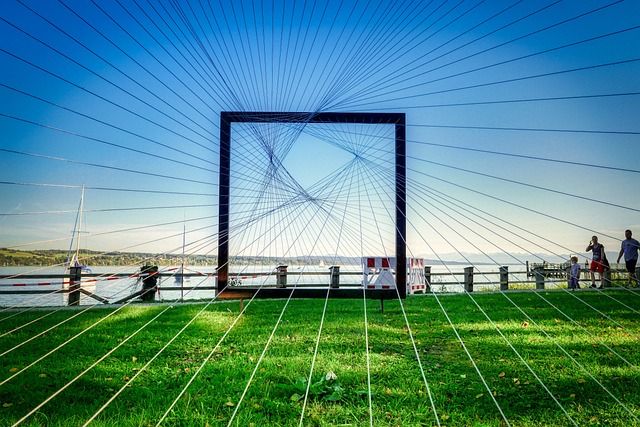Metal Roofing Installation has become popular due to its durability, low maintenance, and energy efficiency. Four primary metals used are aluminium, steel, copper, and zinc, each with unique advantages. Two main design styles are pan/shingle (asphalt-like) and standing seam (continuous rolls). Professional installers offer expertise, warranties, and compliance with local building codes. Choosing the right contractors involves verifying experience, credentials, and client reviews. Installation begins with preparation, followed by inspection, fastening metal panels, installing underlayment and drainage systems. Quality materials and best practices ensure durability and long-term protection. Regular maintenance is crucial for extending the roof's lifespan. Common mistakes include poor preparation and DIY installation without proper training. Case studies showcase successful installations and innovative techniques. Future trends focus on smart materials, modular systems, and recycled content to enhance energy efficiency and sustainability in metal roofing.
“Elevate your home or business with the durability and beauty of metal roofing—a growing trend in the construction industry. This comprehensive guide delves into the world of professional metal roof installers, offering an insightful journey through materials, benefits, and installation processes. From understanding various metal types to choosing the right experts and maintaining longevity, we explore each aspect of successful metal roofing projects. Discover why this game-changing material is a top choice for many.”
Understanding Metal Roofing: Materials and Types

Metal roofing has become a popular choice for many homeowners and commercial property owners due to its durability, low maintenance, and energy-efficient properties. Understanding the different types of metal roofing materials is essential when considering a Metal Roofing Installation. The most common metals used are aluminium, steel, copper, and zinc. Each material offers unique advantages; for instance, aluminium is lightweight, corrosion-resistant, and affordable, making it ideal for residential buildings. Steel, on the other hand, is known for its strength and longevity, often used in commercial structures.
When it comes to types, there are two main categories: pan/shingle and standing seam. Pan or shingle metal roofs mimic the traditional look of asphalt shingles with individual panels that overlap each other. Standing seam roofs, however, feature long, continuous rolls of metal with hidden fasteners, creating a sleek, flat appearance often seen on commercial buildings. The choice between these styles depends on architectural design preferences, local building codes, and climate conditions.
Benefits of Professional Metal Roof Installation

Professional metal roof installers bring a host of benefits to any property. Firstly, they offer expert knowledge and experience in handling diverse metal roofing materials, from aluminium to steel, ensuring your roof is installed or repaired correctly and durably. This expertise translates into enhanced structural integrity and improved longevity for your roof, protecting your home or business from the elements.
Additionally, these professionals employ advanced installation techniques tailored to local climate and building codes, enhancing energy efficiency. Metal roofs are known for their superior reflectivity, which can significantly reduce cooling costs during hot seasons. Moreover, professional installers provide warranties on their work, offering peace of mind and ensuring any issues are promptly addressed, reinforcing the overall value and reliability of your metal roofing installation.
Choosing the Right Metal Roofing Contractors

When considering metal roofing installation, selecting the right contractors is paramount. Look for professionals with extensive experience in metal roofing, as this ensures they possess the necessary skills and knowledge to handle your project effectively. Reputable installers should offer a wide range of metal roofing options, allowing you to choose a style that aligns with your property’s aesthetics.
Check their credentials, licenses, and insurance to verify their legitimacy and protect yourself from potential risks. Reviews and testimonials from previous clients can also give valuable insights into the quality of their work and customer service. Additionally, inquire about warranties and guarantees, as these assure long-term protection for your investment in metal roofing installation.
The Installation Process: Step-by-Step Guide

The installation process for metal roofing begins with meticulous preparation, ensuring the surface is clean and free from debris. Skilled installers then inspect the structure to determine the best fit and fastening method. Next, they unroll and cut the metal panels to size, taking precise measurements to ensure a perfect fit around the building’s contours.
A key step involves securing the underlayment, which provides an extra layer of protection against moisture intrusion. Installers use specialized fasteners or screws to attach the metal panels, starting from the bottom edge and working their way up. Gutters and drains are then installed, completing the metal roofing setup. This method offers durability and low maintenance, making it a popular choice for many homeowners and commercial properties alike in the realm of Metal Roofing Installation.
Ensuring Quality and Durability in Metal Roofs

When it comes to metal roofing installation, ensuring quality and durability is paramount. Professional installers understand the importance of using top-grade materials that meet industry standards. They inspect each component meticulously, from the panels to the fasteners, to guarantee a robust and long-lasting roof. Proper flashing, sealing, and ventilation are also crucial aspects that prevent water damage and maintain optimal performance over time.
These experts follow best practices throughout the installation process, including precise measurements, secure fastening techniques, and adherence to manufacturer guidelines. Regular maintenance checks can further enhance the lifespan of a metal roof, allowing homeowners to enjoy its durability and aesthetic appeal for years to come.
Maintenance Tips for Longevity of Metal Roofs

Regular maintenance is key to extending the lifespan of your metal roof, ensuring its longevity and preserving its aesthetic appeal. After installation, it’s recommended to conduct visual inspections at least twice a year, looking for any signs of damage, corrosion, or loose panels. Addressing these issues promptly can prevent minor problems from turning into major repairs.
Simple tasks like clearing debris, inspecting drainage systems, and tightening fasteners can make a significant difference. Using appropriate cleaning solutions and avoiding harsh chemicals helps maintain the roof’s finish. Additionally, staying informed about the latest maintenance techniques and industry standards for metal roofing installation will contribute to keeping your roof in top condition for years to come.
Common Mistakes to Avoid During Installation

When it comes to metal roofing installation, there are several common mistakes that homeowners and even professional installers can make. One of the biggest blunders is neglecting proper preparation. This includes not inspecting the roof for existing damage, ensuring adequate ventilation, and preparing the underlayment correctly. Ignoring these steps can lead to poor drainage, excessive noise, and even accelerated roofing material degradation.
Another error frequently encountered is using the wrong tools or techniques. Metal roofing requires specific equipment and skilled labor to ensure a secure fit and long-lasting durability. Using inferior tools or attempting DIY installation without proper training can result in misaligned panels, weak connections, and potential safety hazards. Always rely on experienced installers who understand the nuances of metal roofing installation for optimal results.
Case Studies: Successful Metal Roof Installations

When evaluating professional metal roof installers, case studies provide invaluable insights into their expertise and craftsmanship. Examining successful metal roofing installations allows potential clients to see firsthand the quality of work, attention to detail, and innovative techniques employed by these experts. By reviewing real-world projects, you gain a clearer understanding of how different metal roofing styles, materials, and designs can enhance both residential and commercial properties.
Case studies also highlight the problem-solving abilities and adaptability of top-tier installers. Whether it’s navigating challenging architectural features, ensuring proper drainage systems, or integrating solar panels into metal roofs, these case studies demonstrate their capability to handle complex projects successfully. This ensures peace of mind for homeowners and business owners alike, knowing that their unique metal roofing needs are in capable hands.
Future Trends in Metal Roofing Technology

The future of metal roofing installation is brimming with innovation, driven by advancements in technology and a growing focus on sustainability. One prominent trend is the integration of smart materials that can adapt to environmental conditions, offering enhanced energy efficiency and durability. These intelligent roofs may incorporate sensors that monitor weather patterns, adjusting their reflective properties to reduce heat absorption during hot summers and maximize solar gain in colder months.
Additionally, modular metal roofing systems are gaining popularity due to their versatility and speed of installation. These pre-fabricated panels can be easily assembled and attached, reducing construction time and waste. As the demand for eco-friendly options continues to rise, manufacturers are exploring more sustainable materials like recycled aluminum and steel, further solidifying metal roofing’s place in the green building movement.
